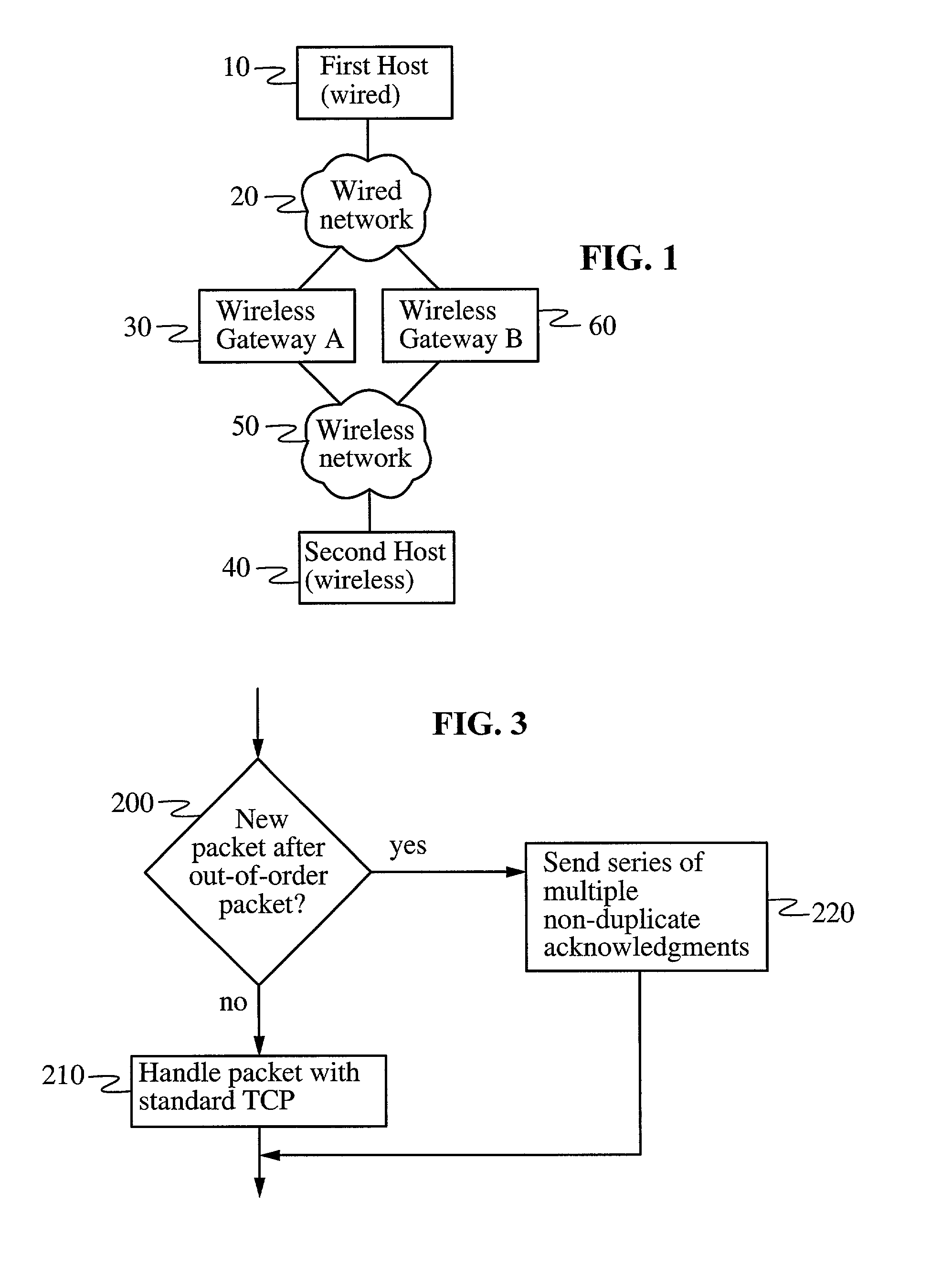Data throughput over lossy communication links
a lossy communication and data technology, applied in data switching networks, frequency-division multiplexes, instruments, etc., can solve the problem that most prior art involving modification of wireless gateways does not effectively address the problem, and achieve the effect of accelerating recovery of maximum window siz
- Summary
- Abstract
- Description
- Claims
- Application Information
AI Technical Summary
Benefits of technology
Problems solved by technology
Method used
Image
Examples
Embodiment Construction
[0027]Particular embodiments of the present invention will now be described in detail with reference to the drawing figures. FIG. 1 shows a data communications network in which the present invention may be typically realized. A first host 10 is connected via a wired network 20 to a wireless gateway 30. Wireless gateway 30, in turn, is connected to a second host 40 via a wireless network 50. Wireless network 50 comprises of at least one lossy link subject to transmission errors caused by physical effects such as fading, interference, or multipath. In contrast, the link or links between the first host 10 and the wireless gateway 30 are wired links that are not normally subject to significant transmission errors. Host devices 10 and 40 thus transmit and receive digital information through a combination of wired and lossy link segments. The first host 10 is also referred to as a wired host, while the second host 40 is referred to as a wireless host. Wireless gateway 30 is not necessaril...
PUM
 Login to View More
Login to View More Abstract
Description
Claims
Application Information
 Login to View More
Login to View More - R&D
- Intellectual Property
- Life Sciences
- Materials
- Tech Scout
- Unparalleled Data Quality
- Higher Quality Content
- 60% Fewer Hallucinations
Browse by: Latest US Patents, China's latest patents, Technical Efficacy Thesaurus, Application Domain, Technology Topic, Popular Technical Reports.
© 2025 PatSnap. All rights reserved.Legal|Privacy policy|Modern Slavery Act Transparency Statement|Sitemap|About US| Contact US: help@patsnap.com



